-
 Bitcoin
Bitcoin $105,278.9859
4.61% -
 Ethereum
Ethereum $2,414.7741
8.20% -
 Tether USDt
Tether USDt $1.0007
0.05% -
 XRP
XRP $2.1600
7.53% -
 BNB
BNB $639.5433
3.75% -
 Solana
Solana $144.3830
9.37% -
 USDC
USDC $1.0001
0.02% -
 TRON
TRON $0.2742
3.84% -
 Dogecoin
Dogecoin $0.1640
8.57% -
 Cardano
Cardano $0.5811
7.49% -
 Hyperliquid
Hyperliquid $37.2466
5.28% -
 Sui
Sui $2.8243
14.84% -
 Bitcoin Cash
Bitcoin Cash $460.8816
2.22% -
 Chainlink
Chainlink $12.9580
11.75% -
 UNUS SED LEO
UNUS SED LEO $9.1359
1.23% -
 Avalanche
Avalanche $18.2302
10.30% -
 Stellar
Stellar $0.2463
7.80% -
 Toncoin
Toncoin $2.9151
7.18% -
 Shiba Inu
Shiba Inu $0.0...01163
9.79% -
 Hedera
Hedera $0.1532
14.01% -
 Litecoin
Litecoin $85.3310
6.29% -
 Monero
Monero $308.8215
2.90% -
 Ethena USDe
Ethena USDe $1.0007
0.03% -
 Polkadot
Polkadot $3.4259
9.42% -
 Dai
Dai $1.0002
0.01% -
 Bitget Token
Bitget Token $4.1742
3.19% -
 Uniswap
Uniswap $6.8272
8.53% -
 Pepe
Pepe $0.0...09939
12.29% -
 Pi
Pi $0.5358
6.03% -
 Aave
Aave $257.3092
12.83%
Is the K-line combination with a morning star but insufficient volume effective?
The morning star pattern suggests a potential bullish reversal, especially after a downtrend, but its reliability in crypto depends on volume and confirmation from other indicators like RSI or moving averages.
Jun 24, 2025 at 02:49 am
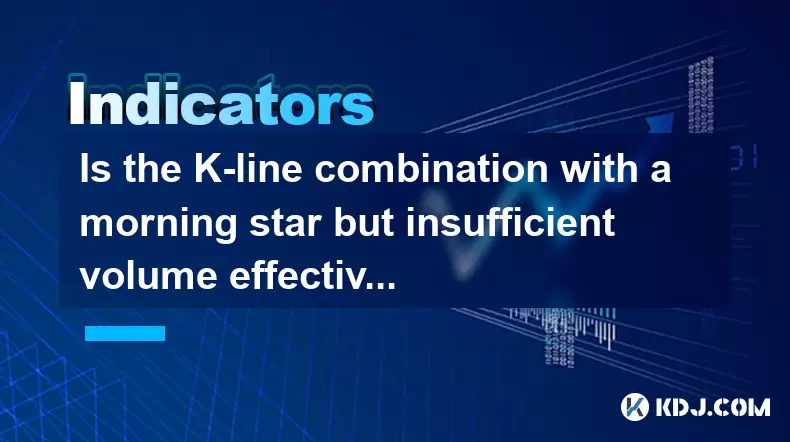
Understanding the Morning Star K-line Pattern
The morning star is a classic candlestick pattern indicating a potential reversal from a downtrend to an uptrend. It consists of three candles: a large bearish candle, followed by a small-bodied candle (often a doji or spinning top), and then a large bullish candle that closes within the range of the first candle. This pattern suggests that selling pressure is weakening and buyers are beginning to take control.
In cryptocurrency trading, where volatility is high and market sentiment shifts rapidly, recognizing such patterns becomes crucial for traders looking to time their entries effectively. However, while the morning star pattern is generally considered bullish, its effectiveness can be influenced by other factors, including volume.
Key Insight: The morning star is most reliable when it appears after a prolonged downtrend and is confirmed by subsequent price action.
The Role of Volume in Confirming Candlestick Patterns
Volume plays a critical role in validating any candlestick pattern. In traditional technical analysis, a strong reversal signal like the morning star should ideally be accompanied by increased volume during the third candle — the bullish one. High volume during this phase indicates strong participation from buyers and adds credibility to the reversal.
However, in the context of cryptocurrency markets, volume can be misleading due to several reasons:
- Some exchanges report inflated or manipulated volumes.
- Low liquidity pairs may not show significant volume even with genuine price movement.
- Market makers and bots can create artificial volume without real directional intent.
Therefore, when analyzing a morning star pattern in crypto charts, traders must consider whether the volume aligns with the expected behavior of a true reversal.
Important Note: A morning star with low volume on the bullish candle might indicate weak conviction among buyers and could lead to false signals.
Interpreting the Morning Star Without Strong Volume
When a morning star forms but lacks sufficient volume during the final bullish candle, it raises concerns about the strength of the reversal. Traders often question whether they should act on such a signal or wait for further confirmation.
Here's how you can interpret this scenario:
- Lack of volume may suggest that institutional or large retail players aren't participating actively.
- The pattern may still be valid if the next few candles continue to move upward and close above key resistance levels.
- If the following candles fail to build momentum, the morning star may turn out to be a trap.
In crypto markets, especially altcoins with thin order books, price can move sharply without much volume. Hence, traders need to combine this pattern with other indicators like moving averages, RSI, or Fibonacci retracement levels.
Caution: Always cross-check the morning star with volume and other technical tools before making trading decisions.
How to Trade a Morning Star with Low Volume in Crypto
If you encounter a morning star pattern but notice insufficient volume, here’s a structured approach to handle the situation:
- Analyze the broader trend: Ensure the pattern occurs after a clear downtrend, not in sideways or choppy markets.
- Check support levels: If the pattern forms near a known support area or a Fibonacci level, it increases the probability of a real reversal.
- Observe the next candle: After the morning star, watch whether the fourth candle continues to rise and ideally breaks above the high of the first bearish candle.
- Use tight stop-loss: If entering a trade, place a stop below the lowest point of the morning star formation to limit risk.
- Incorporate volume analysis: Use tools like OBV (On-Balance Volume) or Chaikin Money Flow to assess buying pressure over multiple periods instead of just one candle.
This method allows traders to manage risk while still capitalizing on potential reversals signaled by the morning star, even in the absence of strong volume.
Alternative Indicators to Confirm the Morning Star
Since volume alone may not always provide clarity in crypto trading, combining the morning star with additional technical indicators can improve decision-making accuracy.
Consider using the following alongside the morning star:
- Relative Strength Index (RSI): Look for RSI divergence or oversold conditions to strengthen the reversal signal.
- Moving Averages: If the price crosses above key moving averages (like the 50 or 200 EMA) after the morning star, it supports the bullish case.
- Fibonacci Retracement Levels: If the morning star appears at a major retracement level (e.g., 61.8%), it adds confluence to the trade setup.
- MACD: A bullish MACD crossover occurring around the same time enhances the likelihood of a successful reversal.
By layering these tools, traders can filter out false signals and increase confidence in trades based on the morning star pattern.
Frequently Asked Questions
Q: Can the morning star pattern work in sideways markets?
A: While it can appear in sideways markets, the morning star is more effective when it occurs after a clear downtrend. In ranging markets, the pattern may not result in a strong directional move.
Q: How long should I wait for confirmation after a morning star?
A: Ideally, look for confirmation within the next 1–3 candles. If the price continues to move in the bullish direction and closes above the high of the first candle, it strengthens the signal.
Q: Is the morning star more reliable in certain cryptocurrencies?
A: The pattern works across all assets, but its reliability improves in larger-cap cryptocurrencies like Bitcoin and Ethereum, which have more consistent volume and fewer manipulative influences compared to smaller altcoins.
Q: Should I ignore a morning star if volume is consistently low throughout the pattern?
A: Not necessarily. You can treat it as a weaker signal and only act if other technical indicators align. Avoid aggressive entries unless further confirmation emerges.
Disclaimer:info@kdj.com
The information provided is not trading advice. kdj.com does not assume any responsibility for any investments made based on the information provided in this article. Cryptocurrencies are highly volatile and it is highly recommended that you invest with caution after thorough research!
If you believe that the content used on this website infringes your copyright, please contact us immediately (info@kdj.com) and we will delete it promptly.
- Bitcoin Holdings Strategy: Riding the $BTC Wave Like a Wall Street Pro
- 2025-06-24 18:25:12
- Crypto Market Check-in: A16z's Mid-Year Indicators and the Road Ahead
- 2025-06-24 18:25:12
- Crypto Funds See $1.2B Weekly Inflows: Confidence Amidst the Chaos
- 2025-06-24 18:30:13
- Roman Coin Treasure: Centuries Hidden, Finally Revealed!
- 2025-06-24 18:30:13
- Celestia Under Fire: Navigating the $100M FUD Storm
- 2025-06-24 16:45:12
- XLM Price, Bitcoin Solaris, and Returns Prediction: Navigating the Crypto Landscape
- 2025-06-24 16:25:13
Related knowledge
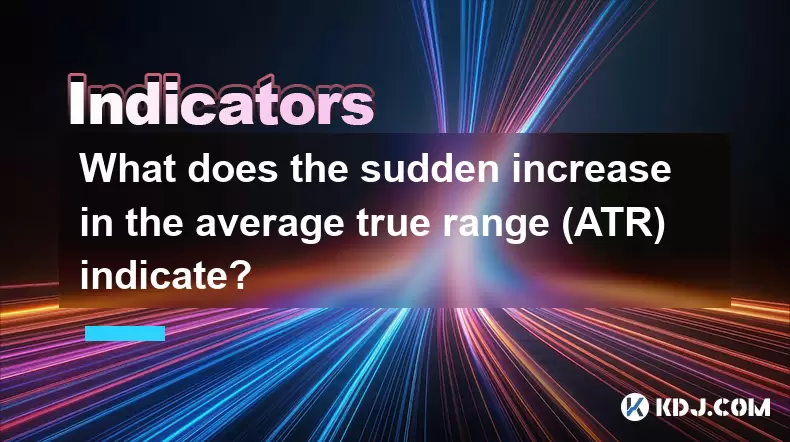
What does the sudden increase in the average true range (ATR) indicate?
Jun 24,2025 at 06:42pm
Understanding the Average True Range (ATR) in Cryptocurrency TradingThe Average True Range (ATR) is a technical indicator used by traders to measure market volatility. In the context of cryptocurrency, where prices can swing dramatically within short periods, ATR becomes an essential tool for assessing potential price movements. The ATR does not indicat...
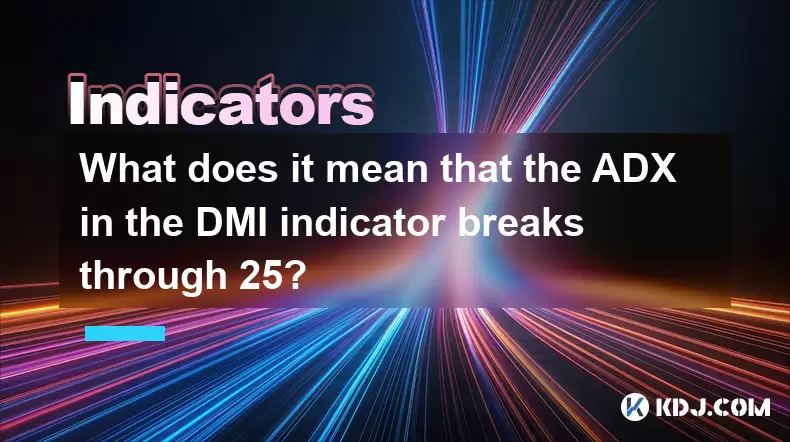
What does it mean that the ADX in the DMI indicator breaks through 25?
Jun 24,2025 at 06:21pm
Understanding the DMI Indicator and Its ComponentsThe Directional Movement Index (DMI) is a technical analysis tool used to identify the strength and direction of a trend in cryptocurrency markets. The indicator consists of two primary lines: the Positive Directional Indicator (+DI) and the Negative Directional Indicator (-DI). These lines help traders ...
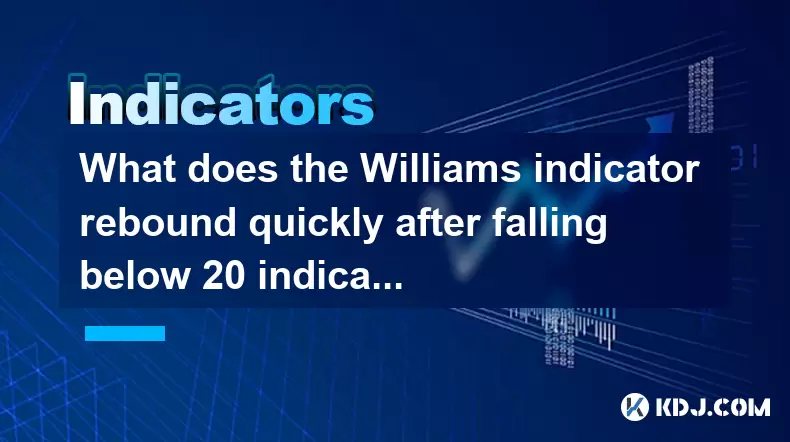
What does the Williams indicator rebound quickly after falling below 20 indicate?
Jun 24,2025 at 04:49pm
Understanding the Williams %R IndicatorThe Williams %R indicator, also known as Williams Percent Range, is a momentum oscillator used in technical analysis to identify overbought and oversold conditions in financial markets, including cryptocurrencies. It was developed by Larry Williams and typically operates on a scale from 0 to -100. In the context of...
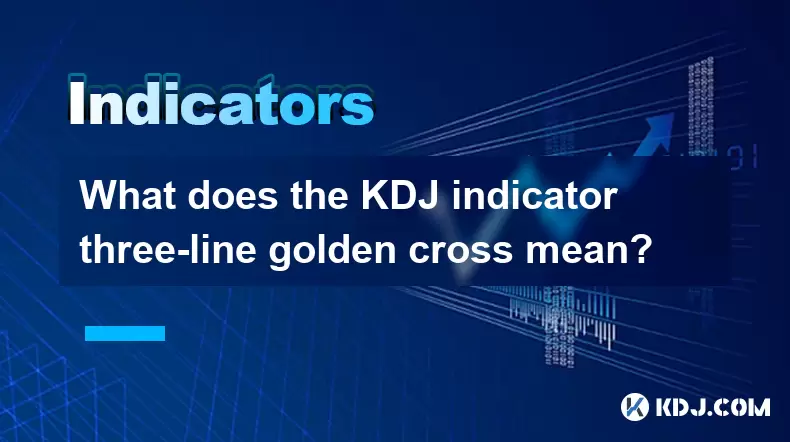
What does the KDJ indicator three-line golden cross mean?
Jun 24,2025 at 05:28pm
Understanding the KDJ Indicator in Cryptocurrency TradingThe KDJ indicator is a technical analysis tool widely used in cryptocurrency trading to identify potential buy and sell signals. It combines elements of two other indicators: the Stochastic Oscillator and the J line, which acts as a signal line. The KDJ consists of three lines — K, D, and J — each...
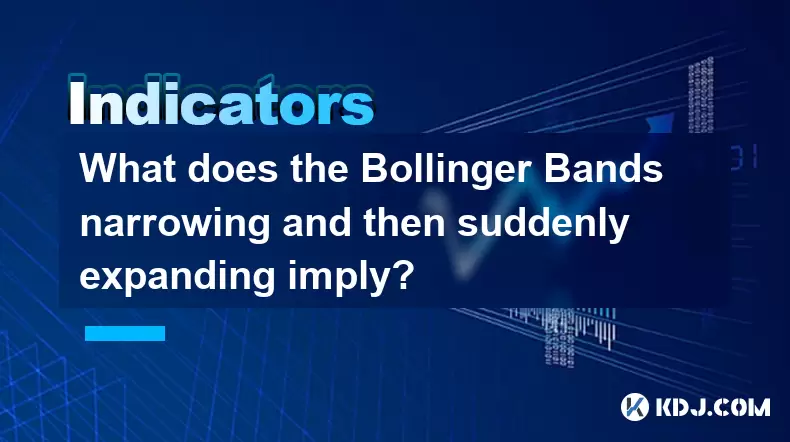
What does the Bollinger Bands narrowing and then suddenly expanding imply?
Jun 24,2025 at 05:56pm
Understanding Bollinger Bands in Cryptocurrency TradingBollinger Bands, a popular technical analysis tool, are widely used in cryptocurrency trading to assess price volatility and potential trend reversals. The indicator consists of three lines: a Simple Moving Average (SMA) in the middle, typically set at 20 periods, with two outer bands that represent...
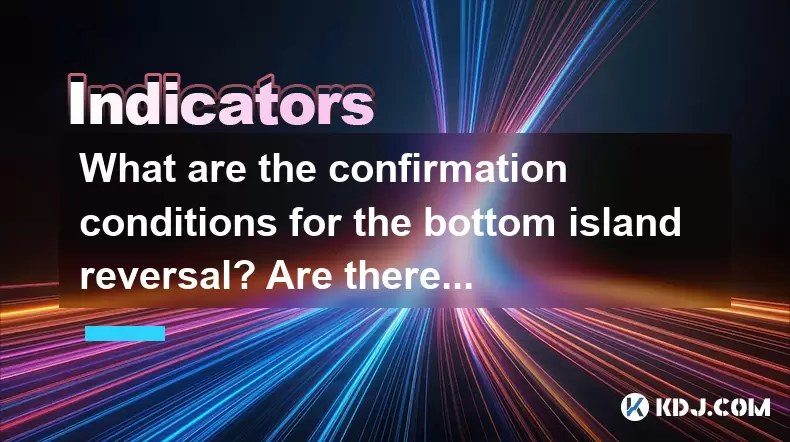
What are the confirmation conditions for the bottom island reversal? Are there many false signals?
Jun 24,2025 at 04:56pm
Understanding the Bottom Island Reversal PatternThe bottom island reversal is a rare but significant candlestick pattern that indicates a potential shift from a downtrend to an uptrend. It typically forms when there's a gap down followed by a gap up, leaving a 'blank' space on the chart — the island — which is isolated from the surrounding price action....

What does the sudden increase in the average true range (ATR) indicate?
Jun 24,2025 at 06:42pm
Understanding the Average True Range (ATR) in Cryptocurrency TradingThe Average True Range (ATR) is a technical indicator used by traders to measure market volatility. In the context of cryptocurrency, where prices can swing dramatically within short periods, ATR becomes an essential tool for assessing potential price movements. The ATR does not indicat...

What does it mean that the ADX in the DMI indicator breaks through 25?
Jun 24,2025 at 06:21pm
Understanding the DMI Indicator and Its ComponentsThe Directional Movement Index (DMI) is a technical analysis tool used to identify the strength and direction of a trend in cryptocurrency markets. The indicator consists of two primary lines: the Positive Directional Indicator (+DI) and the Negative Directional Indicator (-DI). These lines help traders ...

What does the Williams indicator rebound quickly after falling below 20 indicate?
Jun 24,2025 at 04:49pm
Understanding the Williams %R IndicatorThe Williams %R indicator, also known as Williams Percent Range, is a momentum oscillator used in technical analysis to identify overbought and oversold conditions in financial markets, including cryptocurrencies. It was developed by Larry Williams and typically operates on a scale from 0 to -100. In the context of...

What does the KDJ indicator three-line golden cross mean?
Jun 24,2025 at 05:28pm
Understanding the KDJ Indicator in Cryptocurrency TradingThe KDJ indicator is a technical analysis tool widely used in cryptocurrency trading to identify potential buy and sell signals. It combines elements of two other indicators: the Stochastic Oscillator and the J line, which acts as a signal line. The KDJ consists of three lines — K, D, and J — each...

What does the Bollinger Bands narrowing and then suddenly expanding imply?
Jun 24,2025 at 05:56pm
Understanding Bollinger Bands in Cryptocurrency TradingBollinger Bands, a popular technical analysis tool, are widely used in cryptocurrency trading to assess price volatility and potential trend reversals. The indicator consists of three lines: a Simple Moving Average (SMA) in the middle, typically set at 20 periods, with two outer bands that represent...

What are the confirmation conditions for the bottom island reversal? Are there many false signals?
Jun 24,2025 at 04:56pm
Understanding the Bottom Island Reversal PatternThe bottom island reversal is a rare but significant candlestick pattern that indicates a potential shift from a downtrend to an uptrend. It typically forms when there's a gap down followed by a gap up, leaving a 'blank' space on the chart — the island — which is isolated from the surrounding price action....
See all articles
























































































